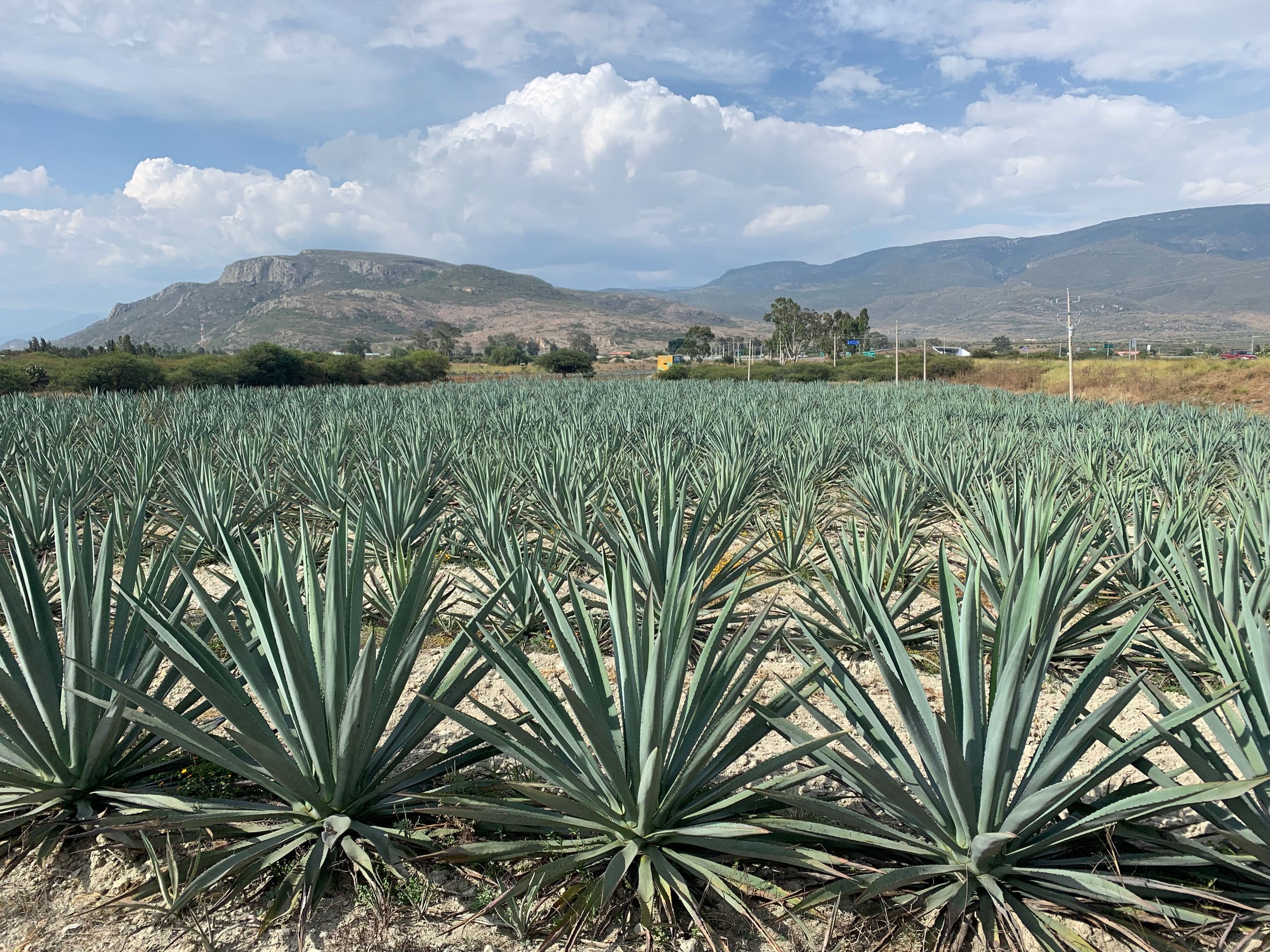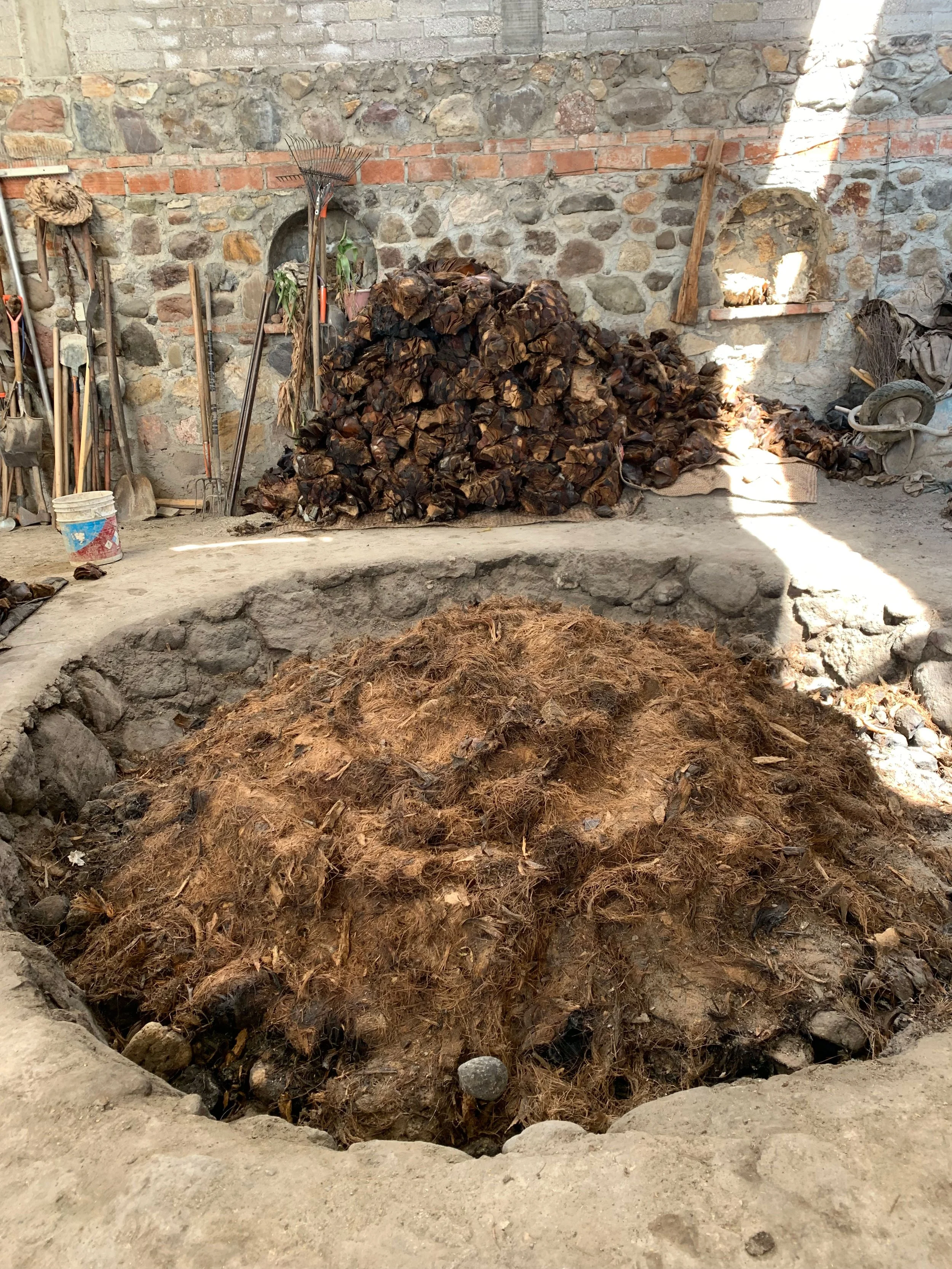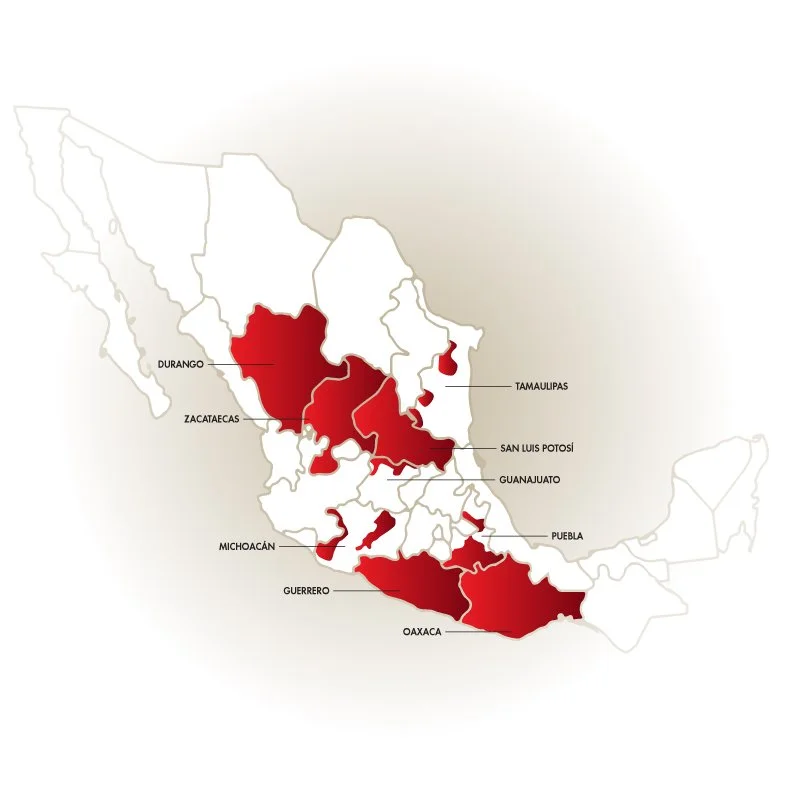
Welcome to Mexico, Birthplace of Mosca Muerta.
Mexico is the proud home to nearly 200 species of agave, of which only 12 to 15 are Mezcal Magueyes. Each Mezcal is associated with a species of Maguey and a region peasant. The word Mezcal has its origin in words of the Nahuatl language. Some hold which derives from Mexcalli which means maguey cooked, that it derives from "mexcalli" ("metl" or "meztl": maguey and "ixcalli": cook)
The Mezcalero Maguey is a plant of the family of the Amaryllidaceae, with long and fibrous leaves of lanceolate, bluish-green in color. He takes advantage of the pineapple or head (stem and base of its leaves) to produce mezcal. Plants mature between seven and ten years, although the crop cycles vary in different regions.
-

Types and Categories of Mezcal
The standard considers two types of mezcal, according to the percentage of carbohydrates from the agave used in its elaboration.
Type I. Mezcal 100% Agave. product to be obtained from the distillation and rectification of musts prepared directly and originally with the sugars from the ripe heads of the agaves; previously hydrolyzed or cooked and subjected to alcoholic fermentation with yeasts (cultivated or no). This type of mezcal can be young, rested, or old and susceptible to being doomed.
Type II. Mezcal. Product obtained from distillation and rectification of musts in which formulation have added up to 20% of other carbohydrates allowed by the corresponding legal provisions.
According to the characteristics acquired in post-distillation and rectification processes, Mezcal is classified into the 3 categories noted below:
• Old or aged Mezcal. Product susceptible to be doomed, subject to a process of maturation at least one year old, in wooden containers white oak or oak.
• Young mezcal. Product obtained by distillation and direct rectification of prepared musts and originally with the sugars extracted from the mature heads of the agaves previously hydrolyzed or cooked and subjected to fermentation alcoholic with yeasts (cultivated or not).
• Mezcal rested. Product likely to be doomed that is left for at least 2 months in white oak or oak wooden containers, for its stabilization.
-

Transformation Process
Cooking: the maguey is cooked in underground ovens, in vertical ovens of masonry, hydrolyzers or in autoclaves. The cooking allows a process of starch hydrolysis and conversion to glucose and fructose. The already cooked pineapples are calling mescal.
Grinding: grinding is done in different forms: mashed by hand, crushed in a tahona (mill that works by the force of horses or mules), or in a harrowing. supporting itself in addition with a press. When finishing the grinding, the juice called must is obtained and the bagasse; the must is deposited or pumped to the fermentation vats.
Fermentation: fermentation takes place in vats of wood, piles lined with wood or in tanks stainless steel. Through this process, which lasts from 1 to 3 days, the conversion of sugars contained in the must in alcohol. The fermented juice is known as dead must and has an alcoholic graduation between 6 and 7%.
Distillation: for distillation are used different technologies, clay pots on stills, copper alembics or alembics of stainless steel. In this operation, the separation of alcohol, taking advantage of its different boiling points. to the product obtained is known as mezcal de first distillation.
Rectification: the equipment to be used is the same as in the distillation process and the procedure is very similar. At this stage it is distilled by the second time the mezcal, with the purpose of raising its alcohol content.
-

Appellation of Origin - Mezcal
Mezcal is a drink that has the designation of origin, which includes protected territories in the states of Durango, Guanajuato, Guerrero, Oaxaca, San Luis Potosi, Tamaulipas, Zacatecas and recently Puebla and Michoacan.
Types of Agave
The species of agave from which these drinks are obtained is different; in the case of tequila, it is from the Agave Tequilana Weber variety Azul and in the case of mezcal it is from Potatorum zucc, Amailidáceas (Tobalá) and Angustifolia haw (Espadín) mainly, but there are also agaves silvestres that flavors are amazing such as Madrecuishe, cuishe, cupreata, lumbre, jabalí, arroqueño, mexicano, tepeztate, salmiana, etc.
On the other hand, unlike tequila, some brands of mezcal have a worm inside the bottle, to which, since pre-Hispanic times, aphrodisiac characteristics have been attributed. This worm lives inside the agave plant and can be of two types: white or red depending on where it is obtained from in the plant.
SOURCE: Dirección General Adjunta de Planeación Estratégica y Análisis Sectorial, Dirección Ejecutiva de Análisis Sectorial, Financiera Rural, México.
-
Appellation of Origin - Tequila
Description goes here

